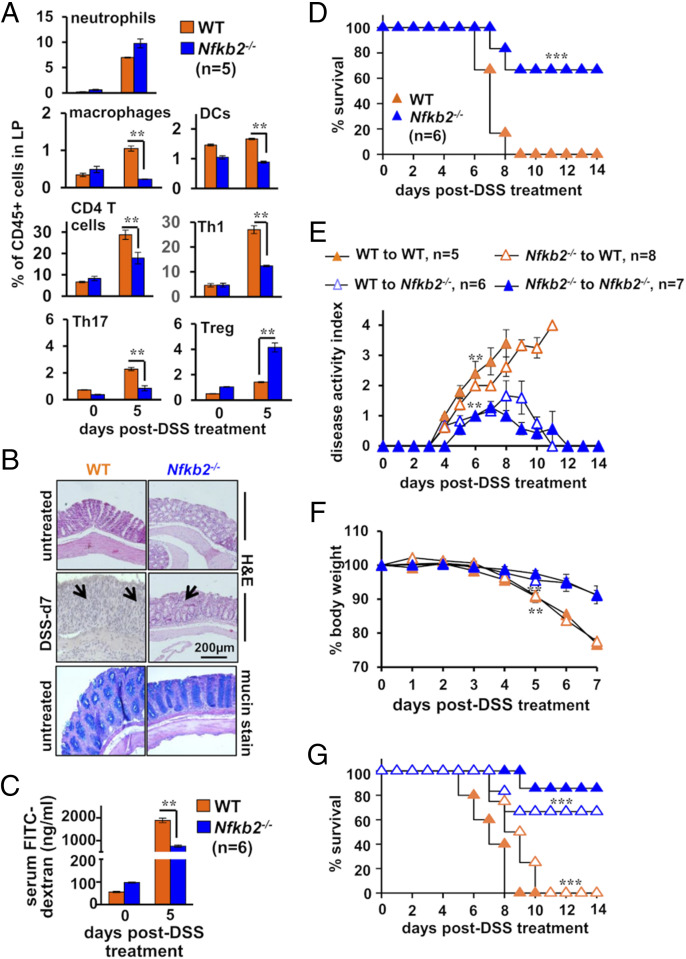Fig. 3.
Nfkb2 deficiency in the stromal compartment ameliorates chemically induced colitis in mice. (A) Bar plot revealing relative frequencies of the indicated immune cells among CD45.2+ cells present in the lamina propria (LP) of WT and Nfkb2−/− mice. Mice were either left untreated or administered with 2.5% DSS. The composition of LP cells was examined by flow cytometry. (B) Representative image showing H&E-stained colon sections derived from untreated or DSS-treated mice of the indicated genotypes (Top). Colon sections from untreated mice were additionally stained using Alcian Blue (Bottom). The data represent n = 4; four fields per section and a total of five sections from each set were examined. Panels show 20× magnification. (C) Bar chart revealing the concentration of FITC-dextran in serum of untreated or DSS-treated WT and Nfkb2−/− mice. FITC-dextran was gavaged 6 h prior to serum collection. (D) WT and Nfkb2−/− mice were administered with 2.5% DSS for 7 d and monitored for survival for 14 d. (E–G) Reciprocal bone marrow chimera generated using WT and Nfkb2−/− mice were subjected to 2.5% DSS treatment and then evaluated for the disease activity (E), body weight changes (F), and mortality (G). The statistical significance was determined by comparing WT to Nfkb2−/− chimeras with WT to WT chimeras or Nfkb2−/− to WT chimeras with Nfkb2−/− to Nfkb2−/− mice. Quantified data represent means ± SEM. For D and G, the statistical significance was determined using log-rank (Mantel–Cox) test. Otherwise, two-tailed Student’s t test was performed. ***P < 0.001; **P < 0.01.

